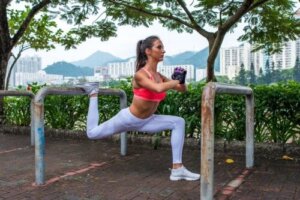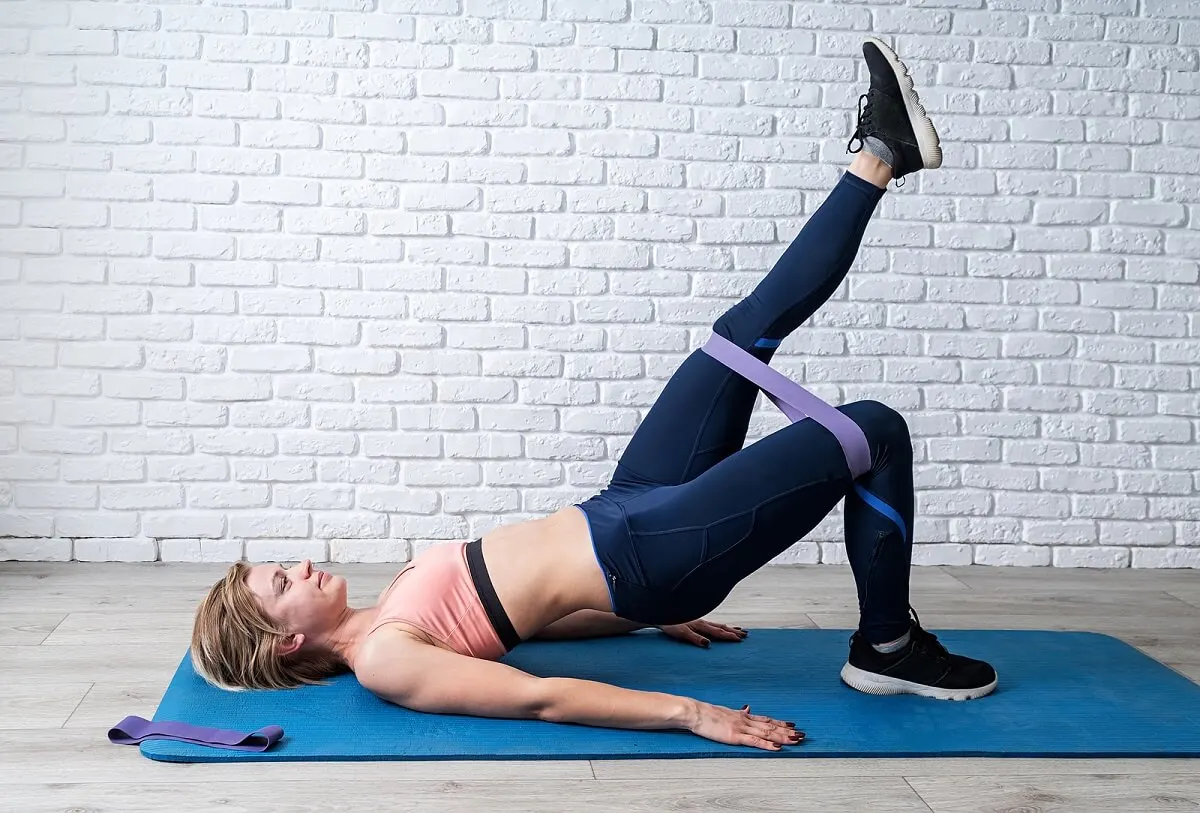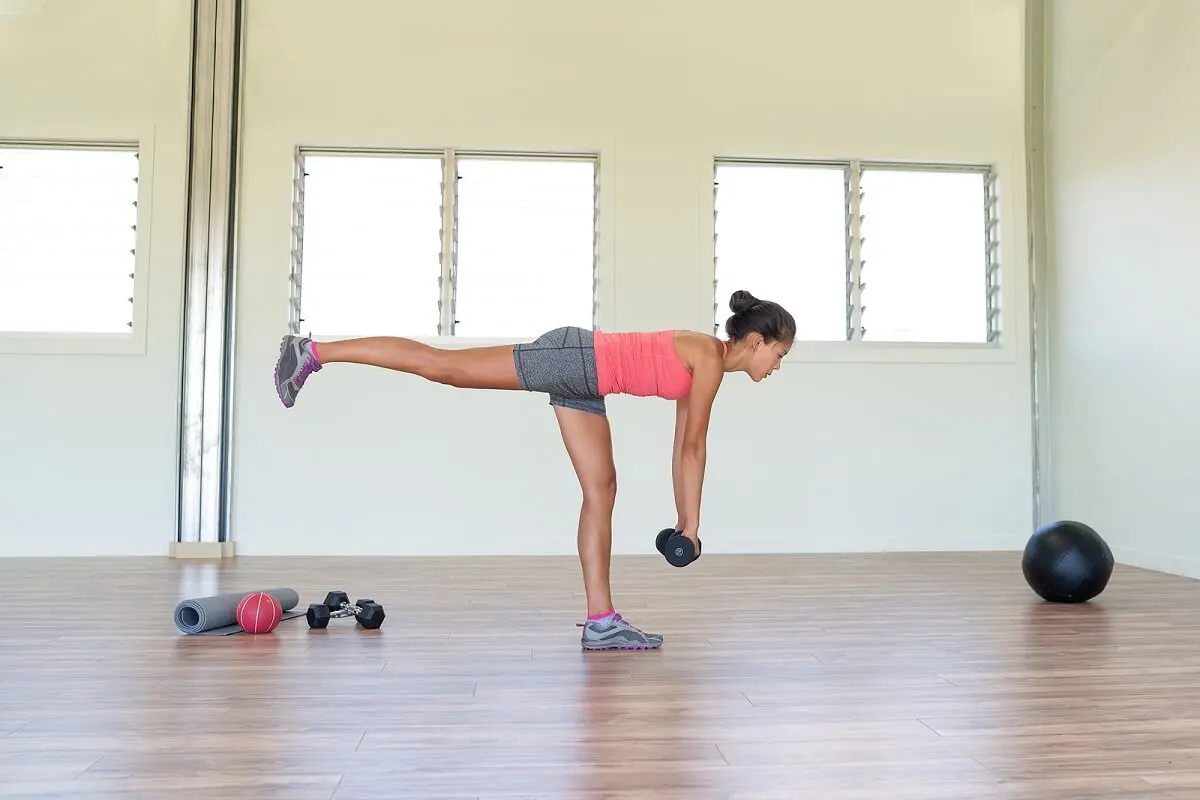Unilateral Training: What Is It and What Are The Benefits?


Reviewed and approved by the nurse Leidy Mora Molina
The most common exercises in the gym are bilateral exercises. These allow us to work with higher loads, increase muscle mass, and gain strength. However, we can also exercise each limb individually to complement the activity and obtain better results. On this occasion, we’re going to take a look at what unilateral training is and its benefits.
Defined in a few words, this training modality is one in which we work one of the limbs independently of the other. That is to say, we exercise one hand for the upper body or one leg for the lower body. Localizing the load on a single limb has interesting advantages.
These are some examples of unilateral exercises
There are plenty of exercises that we can perform unilaterally. We can also use accessories such as dumbbells, elastic bands, pulleys, benches, or our own body weight. The key is that the resistance is on only one side of the body. In case there are any doubts, let’s take a look at some examples.

Unilateral exercises for the upper extremities
- Benchpress with one hand: The chest muscles are worked with this unilateral exercise. Lying on a flat bench, we take a dumbbell to work with one arm. The exercise consists of stretching the limb upwards and then lowering it in a controlled manner to bring the dumbbell towards the chest. We then repeat the activity with the opposite arm.
- One-handed shoulder press: This is also known as “Arnoldpress “since it was one of Arnold Schwarzenegger’s favorites. Sitting or standing, we must extend the arm to bring the dumbbell up until the elbow is extended. Then, we lower slowly until the hand is just above the shoulders.
- One-handed rowing: This is done to work the dorsal muscles. We place one knee and one hand on the flat bench as support points. With the other hand, we hold a dumbbell with the palm facing inwards. Keep the spine straight and bring the dumbbell towards the chest and downwards. Then, we change the position to work the other side.
We think you may also enjoy reading this article: The Diet and Training that Changed Vinicius and Real Madrid’s Lives
Unilateral exercises for the lower extremities
- One-legged squats: While standing, take one foot off the ground and keep your balance with the other leg. Then, bring the hip backward to descend and perform the squat.
- A split squat: This is also known as the “Bulgarian squat.” The exercise consists of resting the tip of one foot on a bench and bending the other leg until it’s aligned with the floor.
- One-legged deadlift: This is ideal for working the hamstrings. Standing, with support from one leg, we must bring the hips back and move the body forward to achieve the dead weight. In this activity, it’s key to maintain balance.
The benefits of unilateral training
Unilateral training is a great complement to conventional exercises. Several studies have noted the positive effects on strength gain, opposite side stimulation, and even improved muscle stability and balance.
For example, a 2005 study was done on variability in muscle size and strength gain after unilateral resistance training using a 12-week evaluation of progressive, dynamic strength training of the non-dominant arm. The conclusion was that both men and women exhibit wide range of responses to training.
Furthermore, it added that men had only a slight advantage in relative size gains compared to women. In turn, women significantly outperformed men in relative strength gains. Let’s take a closer look at all the advantages in detail.
They help to improve stability
By exercising unilaterally, we put more emphasis on the entire middle area. This central part of the body is essential to protect the spine and stabilize the body.
When we train in this way, there’s a tendency to create an imbalance, so that the activity of the muscles that make up the core muscles that make up the spine must be greater in order to achieve stability. That’s why it’s best to perform the exercises standing and in free form to increase the activation of this area.
Unilateral exercises help prevent muscle imbalances
When we perform bilateral exercises (that is, using both hands or both legs), it’s normal that the stronger limb has greater wear than the weaker one.
For example, in the bench press, the right arm could use more force than the left to lift the bar, which generates an imbalance. On the other hand, in a unilateral form, each limb must carry the entire weight of the exercise, thus avoiding that common imbalance.
We think you may be interested in reading this, too: Low-Impact Cardiovascular Training: Exercises and Recommendations
They improve the contralateral part of the body
Unilateral work also increases strength and improves the stability of the opposite limb. This is what’s known as “cross-education.” In this aspect, one study examined the transfer of both strength and skill after a strength training program in 20 women and 20 men.
The results yielded that neuromuscular mechanisms mirrored the strength increases in post-training and retention by supporting the core drive adaptations of cross-education.
In addition, continued strength increases in retention identified the presence of motor learning in cross-education, as confirmed by strength variability.

Include unilateral exercises and achieve balance
Overall, unilateral training is important to deepen strength work on one limb. At the same time, it can help us to strengthen the contralateral part and generate greater muscle activation in the core area. On the other hand, the strength imbalance between the opposite limbs can be avoided this way.
For these reasons, it’s an ideal exercise modality to complement bilateral exercise routines. It’s also a good idea to perform the activities standing and free form. By avoiding the use of machines, this will allow us to activate all of our core muscles. So, do you already include these exercises in your workouts?
All cited sources were thoroughly reviewed by our team to ensure their quality, reliability, currency, and validity. The bibliography of this article was considered reliable and of academic or scientific accuracy.
- Green LA, Gabriel DA. The cross education of strength and skill following unilateral strength training in the upper and lower limbs. J Neurophysiol. 2018 Aug 1;120(2):468-479. doi: 10.1152/jn.00116.2018. Epub 2018 Apr 18. PMID: 29668382; PMCID: PMC6139459. Disponible en: https://pubmed.ncbi.nlm.nih.gov/29668382/
- Hubal MJ, Gordish-Dressman H, Thompson PD, Price TB, Hoffman EP, Angelopoulos TJ, Gordon PM, Moyna NM, Pescatello LS, Visich PS, Zoeller RF, Seip RL, Clarkson PM. Variability in muscle size and strength gain after unilateral resistance training. Med Sci Sports Exerc. 2005 Jun;37(6):964-72. PMID: 15947721. Dsiponible en: https://pubmed.ncbi.nlm.nih.gov/15947721/
This text is provided for informational purposes only and does not replace consultation with a professional. If in doubt, consult your specialist.








